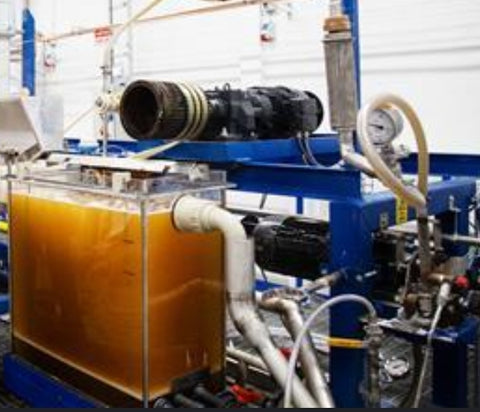Textile recycling is complex compared to glass, metal or even paper recycling. There are so many different types of textiles, there are natural fibers, synthetic fibers, and there are blends combining these fibers. Not all textiles being recycled have tags on them either to let you know what textiles make up the item. This is important to know for recycling.
With the complexity of textile recycling there are multiple different ways to recycle textiles at this point in time. The top 3 ways to recycle textile are as follows:
- Textile to Textile Recycling
- Chemical Recycling
- Mechanical Recycling
Textile - to - Textile

Textile to textile recycling is where pre made/worn textiles are remade into new items, this can also be referred to as upcycling. Textile to textile recycling makes up a very low percentage compared to downcycling, which is turning textile items into rags.
Here at Earth Warrior we are considered textile to textile recyclers. We take clothes and other textile products and take them apart and cut out new patterns from them and sew them into new products.
Chemical Recycling

Chemical recycling with textiles involves the use of chemical solvents to dissolve the fibers of the textile waste, so they can be extracted, recovered and turned into new textiles. The dissolving process separates the fibers so that no tensile strength is lost and the fibers will have the same strength and performance as virgin textiles. Blended textiles can be easier to separate during the solvent process making it a much more viable option for blended textiles. The only downside to chemical textile recycling is the solutions in which are used, as in the end they will have to be disposed of.
Mechanical Recycling

Mechanical recycling is where the textiles are manually pulled apart or shred into new fibers. After they are shred, they are then combined with another fiber, either chemically recycled fiber or virgin fiber. This is to strengthen the fibers before they are spun into new textiles. Some mechanical textile recycling also includes materials not from the textile industry but instead takes plastic bottles that were recycled and turning them into a textile fiber.
Mechanical recycling is great for fabrics made from one fiber type, such as cotton, or hemp. Unfortunately fabric blends are not very viable for this method of textile recycling. If fabric blends do undergo mechanical recycling it usually results in downcycling. The fibers are not strong enough to make quality fabrics so they are used as stuffing or lower grade items.
In Conclusion, each method has its strengths and limitations, reflecting the ongoing effort to navigate the intricate landscape of textile recycling. As we continue to innovate and refine these processes, it is essential to consider the environmental impact and sustainability of our choices, striving for a future where textile recycling becomes not just a necessity but a cornerstone of responsible consumption.